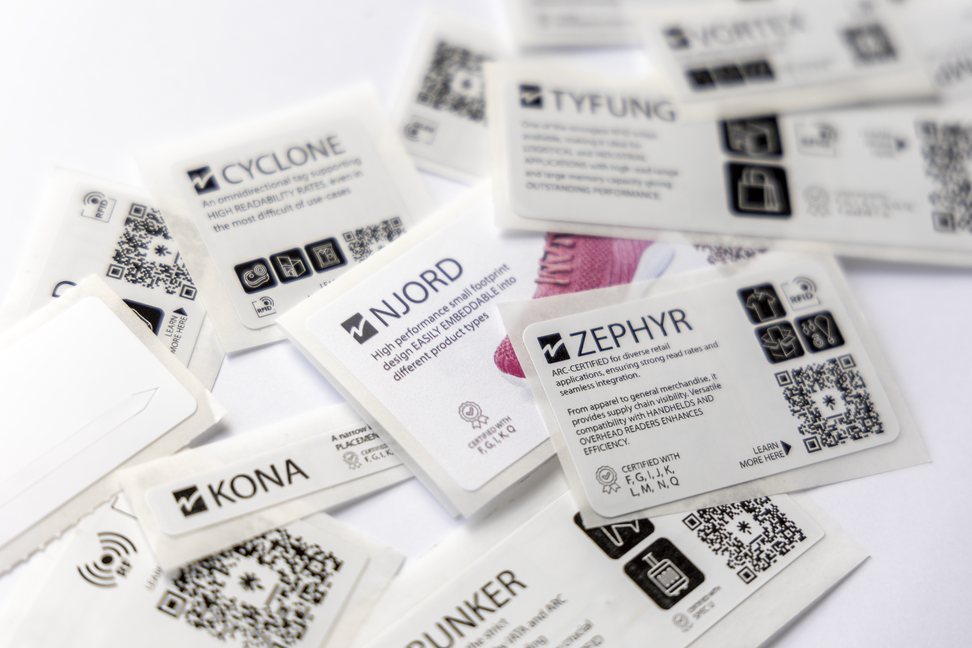RFID tracking stickers are small adhesive stickers that use radio waves to communicate information about the objects to which they are attached. These tags are crucial in modern inventory management, asset tracking, and security systems, providing real-time data and improving operational efficiency.
In-store tagging involves applying RFID tracking stickers to products once they arrive at the store when items have not been tagged at the source. This method benefits stores that need to manage inventory dynamically and adapt to specific promotional needs. This way, retailers can ensure immediate integration into their existing systems, maintaining control over tag and inventory management and this approach allows for customized labeling solutions that address specific store requirements, ensuring optimal placement and functionality.
Components Needed for Using RFID Stickers
- RFID Tag: RFID tracking stickers are printed and encoded by a provider and delivered in sheets or rolls, ready to be applied to packaging and hanging tags. They can even be printed with variable data or pricing information as needed. They are used to track and manage items throughout various stages of the supply chain.
- RFID Readers: RFID readers capture the information stored in RFID stickers and transmit it to a central database for processing and analysis.
- RFID Software: This component is essential for businesses as it allows them to have better inventory visibility, monitor asset movement, ensure data accuracy and improve store optimization thanks to automated processes.
Advantages of RFID Stickers
- Efficiency: RFID tracking stickers save time and resources compared to traditional barcode systems. They can be read automatically without line-of-sight, speeding up inventory checks and reducing manual labor.
- Accuracy: RFID technology reduces errors in inventory management and tracking, ensuring that data is accurate and up to date.
- Visibility: Improved control and visibility of products or assets throughout the supply chain enhanced decision-making and operational efficiency.
Easy Implementation of RFID Software
Modern RFID software is designed to be intuitive and user-friendly, allowing businesses to quickly adopt and integrate this technology into their daily operations. The interface makes it easy to use, even for those with no prior experience with RFID technology. Most systems also include guides and tutorials to help users familiarize themselves with the functionalities, ensuring a smooth implementation.
Flexibility is a key feature of RFID software, as it can be adapted to various business needs. The software can be customized to meet specific requirements, whether for inventory management, asset tracking, or other particular applications. Additionally, the ability to integrate with other business systems, such as ERP and WMS, enhances data flow and operational efficiency, enabling more coherent and effective management of company resources.
Furthermore, by improving efficiency, accuracy, and security in inventory and asset management, businesses can reduce operational costs and increase productivity, contributing to a positive return on investment (ROI) in a short period. Implementing a robust RFID system not only enhances daily operations but also provides a significant competitive advantage in today’s market.

